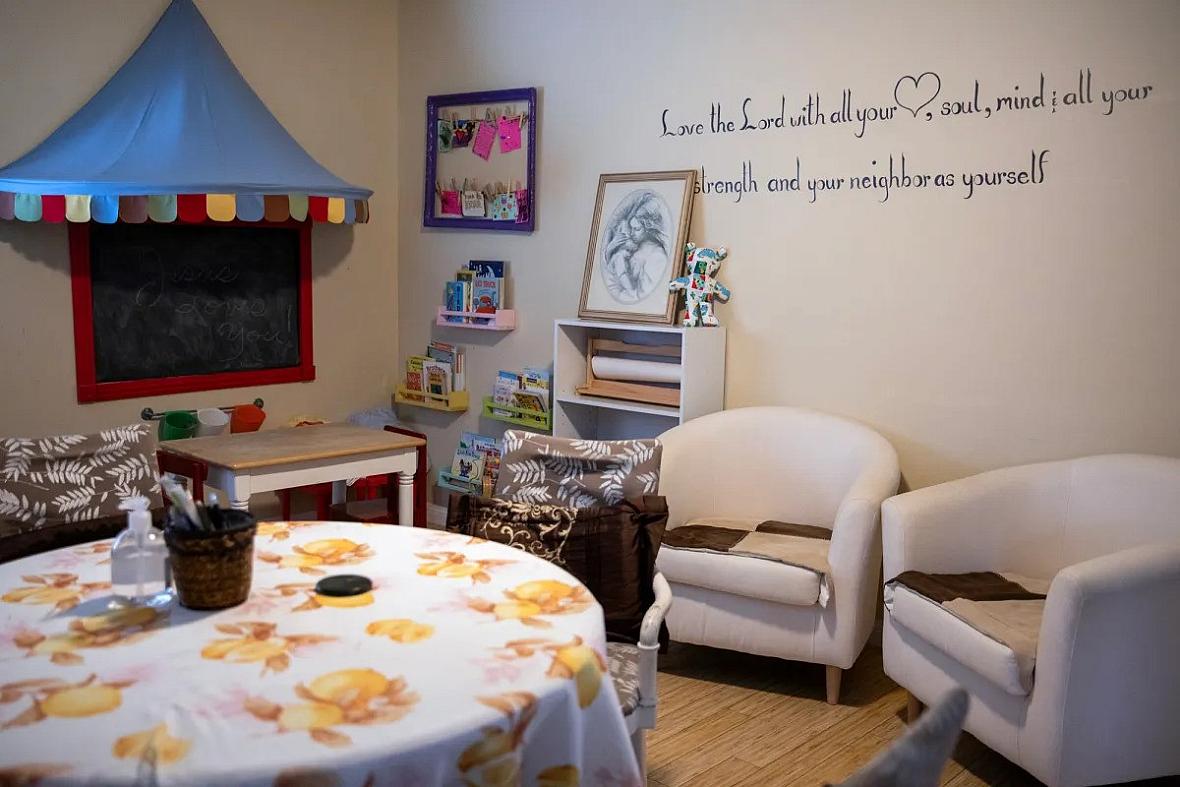From pediatrician to reporter: This California doctor became a journalist to make an impact
The story was originally published by the Cal Matters with support from our 2023 National Fellowship.

The library and counseling room at Community's Child in Lomita on Sept. 29, 2023. Community’s Child is a shelter and resource program that provides supplies, food and housing for women and infants who are struggling with homelessness, addiction and poverty.
Photo by Alisha Jucevic for CalMatters
Dr. ChrisAnna Mink has been a pediatrician for 35 years. Her experience as a mandated reporter for cases of suspected child abuse, as well as the eight years she spent as director of a clinic for children in foster care at Harbor-UCLA Medical Center, inspired her to turn from medicine to journalism.
For more than three decades during her work as a pediatrician, Dr. ChrisAnna Mink was grateful that she could call Los Angeles County’s Department of Children and Family Services when she suspected a child was unsafe in their home.
And as director of Harbor-UCLA’s Medical Center clinic for children in foster care, she was haunted by the toughest cases she saw – children beaten, neglected, exposed to drug use, domestic violence and worse.
But it wasn’t until she attended the University of Southern California’s Domestic Violence Symposium and Impact Reporting program in April that she had ever considered how intense the trauma could be when officials removed children from their “safe parent” – victims of domestic violence who had difficulties leaving abusive romantic partners.
Mink’s story, published Thursday in CalMatters, examines the pitfalls around California’s “failure to protect” laws, which allow child welfare agencies to remove children when they believe an abused parent cannot ensure their kids’ safety.
The law is intended to safeguard kids in dangerous situations, but advocates and domestic violence victims — most of them women – are beginning to speak out about how the threat of separation is almost as harmful as the violence they’re trying to leave behind.
“I didn’t appreciate the nuances and the difficulty of leaving a difficult, traumatic and violent situation,” Mink said. “I learned in that symposium that it takes at least seven tries for most women, on average, to escape a violent partner.”
By now, Mink was a freelance reporter, having turned from medicine to journalism with the hope that her work could change the conditions that were responsible for sending her injured, neglected kid patients in the first place.
“I thought that maybe if people knew that there were these little faces to go along with all the statistics, maybe if I told their stories, that I could help influence change.”
As part of the USC symposium on domestic violence, Mink chose to report on “failure to protect” laws from the perspective of the mothers and children who were separated from each other after experiencing domestic violence.
She began reporting in July, interviewing five domestic survivors in total for her story. Finding time to meet with them was one of the most challenging parts of reporting the process, Mink said, as all of the survivors were busy parents of young children who worked anywhere from one to three jobs as they tried to get their lives back on track.
“The people that talked to me were genuinely amazing,” Mink said. “They’ve decided that they want to use their experience and their lives’ trauma to make things easier for others that are going through the same situation.”

